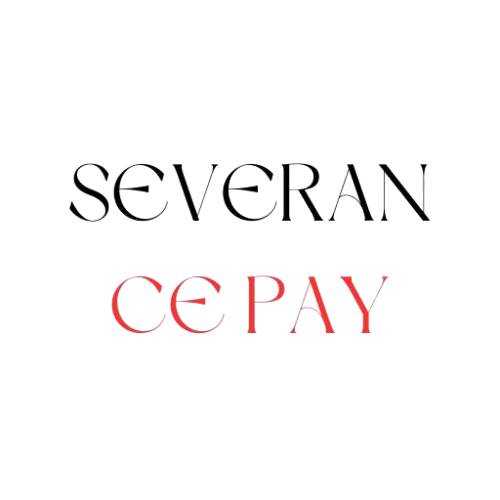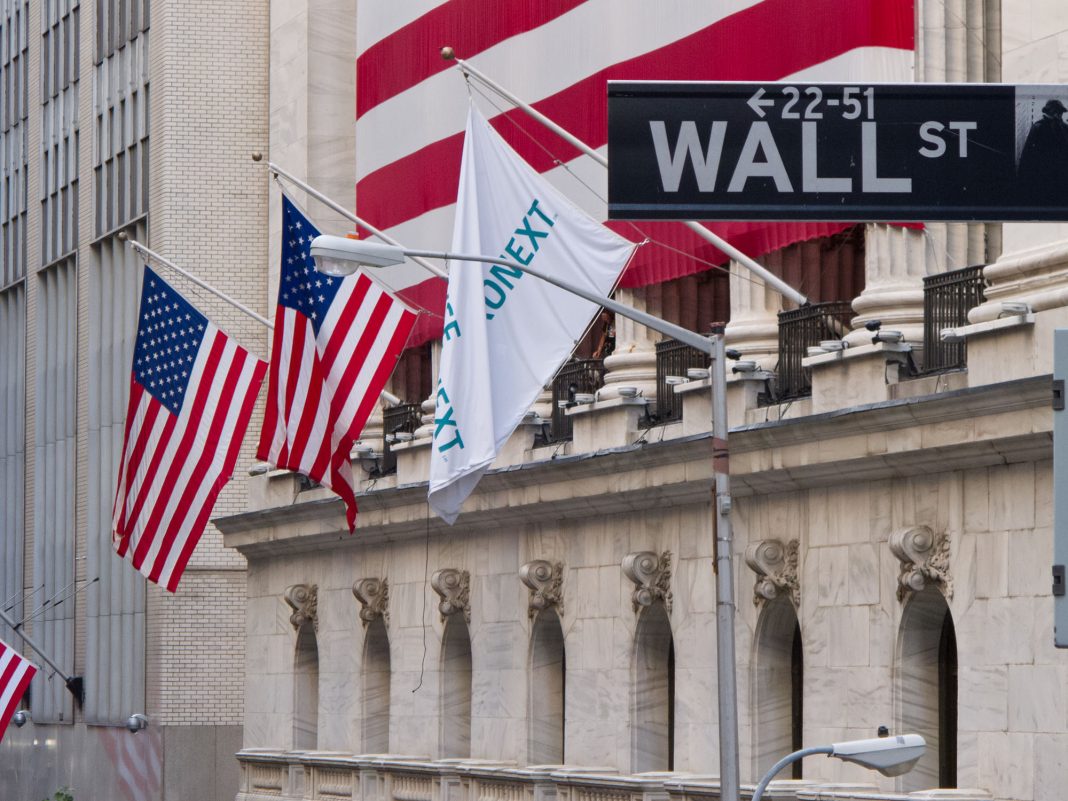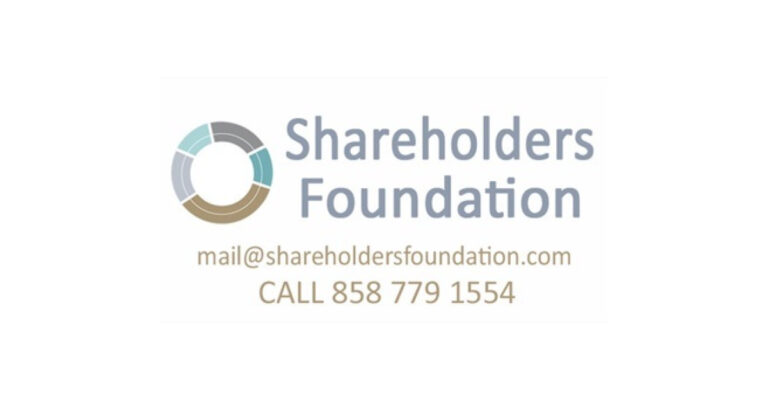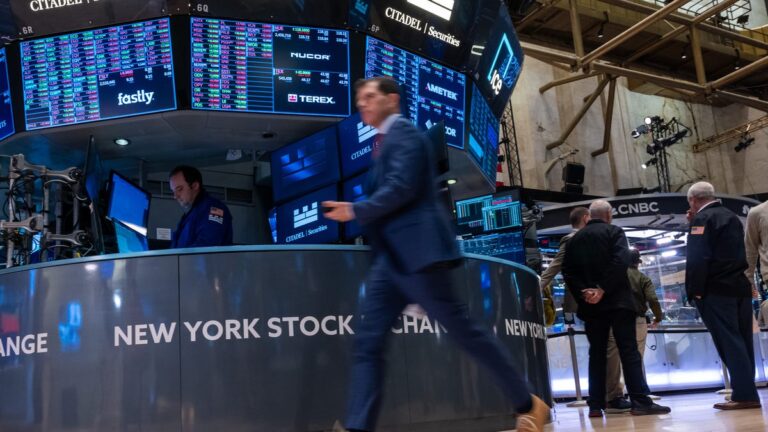2024 had its dazzling moments, but, in the end, it was a year of treading water for biopharma stocks, judging from the top three electronic transfer funds (ETFs) specializing in such shares.
The iShares Biotechnology ETF (NASDAQ: IBB)—the largest biotechnology ETF with total assets of $6.779 billion as tracked by VettaFi—slid 4% during 2024, from $138.07 on the first trading day January 2 to $132.32 on Wednesday. Year over year, IBB shares inched up 1%, however, from $130.83 on December 18, 2023—which is a 13% fall from its 12-month high of $150.57 on September 19, a day after the Federal Reserve’s Governing Board lowered interest rates by a half percentage point.
The second largest biotech ETF, the SPDR S&P Biotech ETF (NYSE Arca: XBI)—which has total assets of $6.671 billion—dipped 0.3% from $90.23 at the start of the year to $89.93 at the closing bell Wednesday. Over the 12-month period, however, XBI fared better, rising 6.6% from $84.36. But XBI has tumbled nearly 15% from its 2024 high of $105.47 reached on November 11, as the market enjoyed a week-long bounce following the re-election of Donald Trump to a second term.
For XBI, IBB, and other biotech ETFs, the late December prices were skewed by a 10-day period of day-to-day declines—the longest such streak since 1974—that accelerated Wednesday after Federal Reserve Chairman Jerome Powell jolted investors by telling reporters the central bank would be “cautious” about further interest rate cuts in 2025.
The following is data compiled by Morningstar (NASDAQ: MORN)’s Morningstar Direct asset management platform for StockWatch on the top five performing biotech stocks of 2024 and the five biotech stocks that fell the most during this past year, with brief explanations for the increases or declines. The figures for each company are the market returns as compiled between January 1 and December 16.
The list includes stocks on the two exchanges with the largest number of biotech companies that trade shares, NASDAQ and the New York Stock Exchange (NYSE).
Just missing the top 5 leaders list at number 6 were the American Depositary Receipts (ADRs) of Mesoblast (NASDAQ: MESO). The Australian allogeneic cell therapy developer saw its ADRs skyrocket 450% during 2024 through December 16, on investor anticipation that the FDA would approve the company’s Ryoncil (remestemcel-L-rknd) as the first therapy authorized in the United States to treat a form of graft vs. host disease (GVHD). That anticipation proved correct on Wednesday, when the agency approved the allogeneic bone marrow-derived mesenchymal stromal cell therapy to treat steroid-refractory acute GVHD in children two months of age and older.
The FDA approval helped Mesoblast ADRs jump 35% Thursday, from $12.25 to $16.51 in mid-morning trading as of 11:37 a.m. ET. The U.S. approval sparked an even bigger lift to Mesoblast’s shares traded on the Australian Stock Exchange (MSB.AX), which surged 54% Thursday from A$1.98 ($1.24) to A$3.05 ($1.91).
Top 5 Stock Leaders
#1. Bright Minds Biosciences
NASDAQ: DRUG
2024 Increase: +2,615%
With the highly appropriate stock ticker of DRUG, Bright Minds Biosciences catapulted in price and trading volume October 15, surging an eye-popping 1,446% from $2.49 to $38.49 on investor speculation about the value of its pipeline. That speculation was triggered by H. Lundbeck (NASDAQ Copenhagen: HLUN-A) saying a day earlier it would acquire Longboard Pharmaceuticals (NASDAQ: LBPH) for $2.6 billion, adding to its neuro pipeline Longboard candidates led by bexicaserin (LP352), an oral, centrally acting 5-hydroxytryptamine 2C (5-HT2C) receptor superagonist being developed to treat seizures associated with developmental and epileptic encephalopathy (DEEs), including Dravet syndrome, Lennox-Gastaut syndrome, and other rare epilepsies. Bexicaserin is similar to Bright Minds’ lead pipeline candidate BMB-101, also a 5-HT2C agonist in development to treat refractory epilepsies and other indications, such as psychosis, addiction, and impulse control disorders. Lundbeck’s $60 a share offering price marked a 54% premium. Lundbeck and Longboard completed their deal December 2.
#2. Monopar Therapeutics
NASDAQ: MNPR
2024 Increase: +1,470%
From single-dollar-per-share territory, Monopar shares multiplied more than seven-fold (605%) from $4.63 to $32.66 on October 24, after the company secured an exclusive worldwide license from Alexion, the rare disease unit of AstraZeneca (AZN on London, Stockholm, and NASDAQ exchanges) to develop ALXN-1840 (bis-choline tetrathiomolybdate), a Wilson disease candidate that Alexion had progressed through the 214-patient Phase III FoCus trial (NCT03403205), which met its primary endpoint. Monopar agreed to give Alexion 387,329 shares representing 9.9% ownership in Monopar—which also agreed to pay Alexion $4 million upfront, up to $94 million tied to achieving regulatory approval and sales milestones, plus tiered royalties based on net sales in the low to mid-double digits. After skidding 55% to $14.57, shares rebounded, more than doubling 110.5% to $30.68 Tuesday before dipping late this past week.
#3. Summit Therapeutics
NASDAQ: SMMT
2024 Increase: +616%
After days of steady increases during September, Summit shares peaked at $33.89 on September 16, after achieving its 2024-high closing price of $31.93 the previous Friday. Driving shares sky-high were two presentations of positive data. At the 2024 World Conference on Lung Cancer (WCLC 2024) in San Diego, Summit showed that its bispecific antibody ivonescimab achieved statistically significant improvement in progression-free survival (PFS) compared to Merck (NYSE: MRK)’s cancer blockbuster Keytruda® (pembrolizumab). And at the 2024 European Society for Medical Oncology Annual Meeting (ESMO 2024), Summit showed positive data for ivonescimab in advanced triple-negative breast cancer, recurrent/metastatic head and neck squamous cell carcinoma, and metastatic microsatellite-stable colorectal cancer. Ivonescimab combines the blockade of PD-1 seen in immunotherapies with the anti-angiogenesis effects associated with blocking VEGF.
#4. Exicure
NASDAQ: XCUR
2024 Increase: +524.5%
Exicure shares went on a tear last month, rocketing from $2.90 on November 13 to a 52-week high of $36 before closing at $31.99 on November 27. Three months after carrying out a 1-for-5 reverse stock split and two months after converting about $1 million of debt into equity, Exicure acted to regain compliance with NASDAQ’s minimum $2.5 million stockholders’ equity requirement for continued listing by selling $1.3 million, then another $8.7 million in a combined 3.333 million shares to HiTron Systems. Those deals, plus a later $2 million sale of 433,332 shares to another South Korea-based company, SangSangIn Investment & Securities, lifted Exicure’s stockholders’ equity to approximately $4.3 million as of Tuesday.
#5. Janux Therapeutics
NASDAQ: JANX
2024 Increase: +474%
Janux shares more than tripled, leaping 229% from $15.10 to $49.75 on February 27 after the company announced positive but early clinical data from Phase Ia trials for both its clinical programs. The PSMA-targeting JANX007 in late-stage metastatic castration-resistant prostate cancer showed that at ≥ 0.1 mg, 14 of 18 subjects (78%) achieved PSA30 declines while 10 of 18 (56%) achieved PSA50 declines. As for JANX008 for advanced or metastatic solid tumors expressing high EGFR, one subject with non-small cell lung cancer (NSCLC) treated at 0.15 mg once-weekly showed confirmed partial response with 100% reduction of the target lung lesion and elimination of liver metastasis with no cytokine release syndrome or treatment-related adverse events. Partial response continued through week 18. Shares peaked at $71.71 on December 5, after Janux priced a $350 million underwritten public offering.
Top 5 Stock Laggards
#1. Aditxt
NASDAQ: ADTX
2024 Decrease: —99.89%
While Aditxt shares cratered, the company pursued turnaround efforts that included mergers with both Evofem Biosciences (OTCQB: EVFM) and Appili Therapeutics (TSX: APLI; OTCPink: APLIF). The two generated $7.8 million in revenue from January–June 2024. Aditxt is counting on that money, plus the $6 million Appili received from the Department of Defense (DoD) to advance ATI-1701 toward an Investigational New Drug (IND) submission to the FDA in 2025. The DoD funding is part of a $14 million commitment from the agency to Appili toward developing ATI-1701, a live attenuated vaccine designed against the Category A pathogen Francisella tularensis. Hoping to stop the stock slide and regain compliance with NASDAQ’s minimum bid rule requiring a closing bid price of $1 or more for 20 consecutive trading days, Aditxt carried out a 1-for-40 reverse stock split effective October 2. However, stocks declined 39% from $4.44 to $2.70 the day of the split, then slid further, reaching 19 cents on Friday.
#2. CNS Pharmaceuticals
NASDAQ: CNSP
2024 Decrease: —99.84%
CNS shriveled from $59.50 at the start of the year to 11 cents at the close on December 20. Effective June 5, CNS carried out a 1-for-50 reverse stock split designed to boost its share price plus regain compliance with NASDAQ’s minimum bid rule. While CNS shares continued to decline this past year, CEO John Climaco said the company was “poised to unlock value for all stakeholders in the near term” thanks to progress in its clinical pipeline, whose lead product Berubicin is in a global, potentially pivotal Phase II trial (NCT04762069) in adults with recurrent glioblastoma multiforme (WHO Grade IV) after failure of standard first-line therapy. CNS said it expects to report primary analysis data from the study in the first half of 2025.
#3. Allarity Therapeutics
NASDAQ: ALLR
2024 Decrease: —99.71%
Allarity spent 2024 digging from past financial problems that sent its shares tail-spinning from $325.80 on January 2, with some successes. In September, Allarity said two patients in its Phase II trial assessing lead program stenoparib in advanced ovarian cancer had exceeded one year on treatment. That result, according to Allarity, showed durable clinical benefit and highlighted stenoparib’s potential as a meaningful treatment option for patients with limited or no alternatives. By October, Allarity regained compliance with NASDAQ’s minimum bid price rule, with CEO Thomas Jensen saying the company as a result could focus resources on advancing stenoparib, a dual PARP/Tankyrase inhibitor being co-developed with a drug-specific DRP® companion diagnostic. Allarity also improved its cash and cash equivalents during 2024 to $18.5 million as of September 30 from $0.2 million on December 31, 2023.
#4. Elevai Labs
NASDAQ: ELAB
2024 Decrease: —99.44%
Elevai Labs rang out 2024 by renaming itself PMGC Holdings and redomiciling from Delaware to Nevada following a strategic reorganization effective December 23, though the company still retains the ELAB ticker symbol. The reorganization followed a year in which the former Elevai cratered from $378 a share. Elevai tried to stem the investor selloff of shares—and regain compliance with NASDAQ’s minimum bid price rule—through a 1-for-200 reverse stock split that took effect November 27. One key to PMGC’s future will likely be EL-22, an obesity treatment designed to also preserve muscle mass. In collaboration with KCRN Research, the company is preparing for a pre-IND meeting with the FDA anticipated in the first quarter of 2025, hoping to set a regulatory pathway for clinical development of the engineered probiotic, which is designed to express myostatin on its surface.
#5. TFF Pharmaceuticals
NASDAQ: TFFP
2024 Decrease: —99.07%
TFF Pharmaceuticals finished its final trading day on December 12 with a closing price of 6.5 cents a share. The following day, NASDAQ suspended trading in the stock, a month after the company announced it was dissolving following its board’s approval of a liquidation plan and appointment of Craig R. Jalbert, CIRA, a principal at the accounting firm Verdolino & Lowey, to oversee the company’s wind-down as TFF’s CEO, president, CFO, treasurer, secretary, and sole board member. Those actions came November 14, the day it told the U.S. Securities and Exchange Commission (SEC) it was unable to file a Form 10-Q quarterly report for the third quarter of 2024. TFF later said NASDAQ will formally delist the stock after filing with the SEC a Form 25-NSE, which will remove the company’s securities from listing and registration on the exchange.






